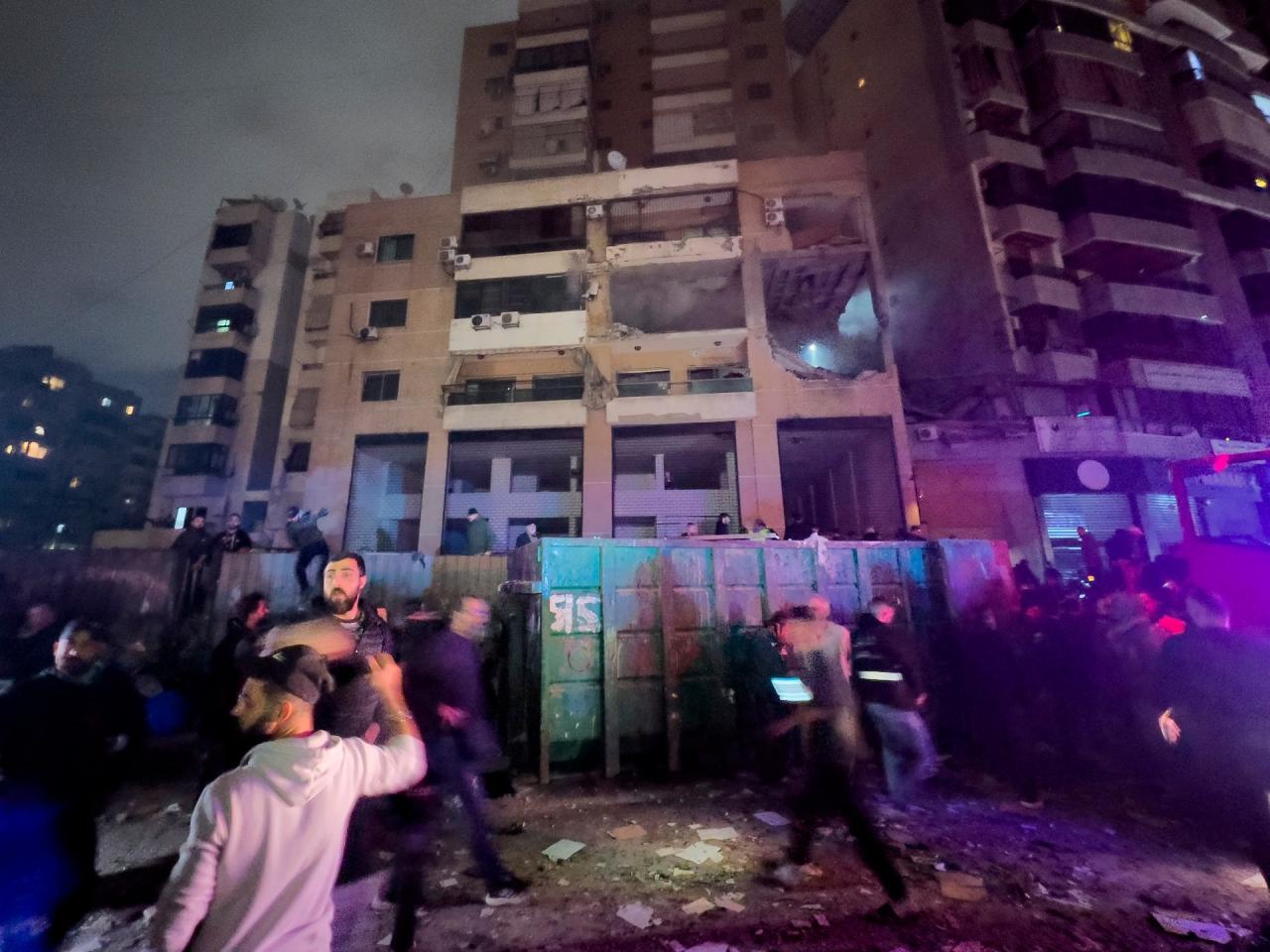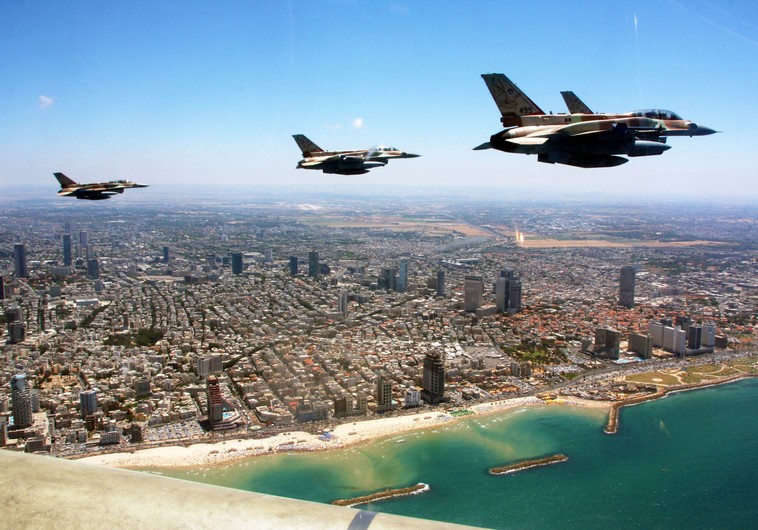
Israeli Aircraft Buzz Beirut as the Drums of War Bang Loud
Israeli aircraft buzz Beirut as the drums of war bang loud – the headline alone speaks volumes. Tensions between Israel and Lebanon are once again simmering, reaching a boiling point as Israeli aircraft conduct repeated flights near Beirut. This isn’t just another news cycle; it’s a potential flashpoint with implications for the entire region. The recent activity has sparked fears of a wider conflict, bringing back haunting memories of past wars and highlighting the precarious balance of power in the Middle East.
Understanding this situation requires examining the complex geopolitical landscape. Israel’s concerns about Hezbollah’s military capabilities and influence in Lebanon are well-documented, and these overflights are likely a response to perceived threats. However, the escalating rhetoric and the potential for miscalculation create a volatile environment where a minor incident could easily spiral into a major confrontation. The international community watches anxiously, trying to prevent a full-blown conflict.
Geopolitical Context of Israeli Aircraft Activity near Beirut

The recent Israeli aircraft activity near Beirut is yet another flashpoint in a long and complex history between Israel and Lebanon. This seemingly routine military action, however, carries significant geopolitical weight, reflecting deeply rooted tensions and the volatile regional dynamics at play. Understanding the current situation requires examining the historical context, the current political climate in Lebanon, and Israel’s specific security concerns.Israel’s actions are not isolated incidents but rather part of a continuous, albeit fluctuating, engagement shaped by decades of conflict and mistrust.
The ongoing presence of Hezbollah, a powerful Shia militant group, significantly complicates matters, adding another layer to the already precarious situation.
Historical Overview of Israeli-Lebanese Relations
The relationship between Israel and Lebanon has been marked by intermittent periods of intense conflict and uneasy ceasefires. The 1982 Lebanon War, triggered by the Palestine Liberation Organization’s (PLO) attacks on Israel, profoundly impacted both countries. Israel’s subsequent occupation of southern Lebanon for nearly two decades fueled resentment and resistance, fostering the growth of Hezbollah. Even after Israel’s withdrawal in 2000, tensions persisted, punctuated by periodic skirmishes and cross-border incidents.
The 2006 Lebanon War, sparked by Hezbollah’s cross-border raid and capture of Israeli soldiers, further exacerbated the animosity and highlighted the ongoing security challenges. This historical baggage continues to shape the current dynamic, fueling mistrust and making even seemingly minor incidents highly sensitive.
The Israeli aircraft buzzing Beirut is a stark reminder of escalating tensions; the region feels like it’s teetering on the brink. This instability, coupled with global uncertainty, makes me wonder about the potential economic fallout. Will the Fed’s actions, as discussed in this insightful article on will the fed factor turbocharge commodity prices , further exacerbate the situation and drive up prices, potentially impacting already strained resources in the region?
It’s a scary thought, especially given the current volatile geopolitical climate in the Middle East.
Current Political Climate in Lebanon and its Regional Implications
Lebanon is currently grappling with a profound political and economic crisis. The country is facing hyperinflation, widespread poverty, and a dysfunctional political system hampered by sectarian divisions and external interference. This internal instability makes Lebanon vulnerable to regional power plays, potentially exacerbating existing tensions with Israel. The weak Lebanese state struggles to maintain control over its territory, particularly in areas where Hezbollah maintains significant influence.
This lack of central authority creates opportunities for further escalation, making the Israeli overflights even more consequential.
The Israeli aircraft buzzing Beirut – a chilling reminder of how quickly tensions can escalate. It makes you think about the technology fueling these conflicts, and how advancements like those described in this article on new battery designs could lead to gains in power and capacity could impact the range and capabilities of military drones and other weaponry.
Ultimately, these technological leaps, while impressive, only serve to heighten the stakes in already volatile situations like the one unfolding in Lebanon.
Israel’s Security Concerns Regarding Hezbollah’s Presence in Lebanon
Israel views Hezbollah’s presence in Lebanon as a major security threat. Hezbollah possesses a substantial arsenal of rockets and missiles capable of reaching major Israeli population centers. Israel also accuses Hezbollah of operating in Syria and other regions, threatening Israeli interests beyond its immediate borders. The Israeli military regularly conducts surveillance and, occasionally, more assertive actions, to monitor Hezbollah’s activities and deter potential attacks.
The Israeli government publicly frames these actions as preventative measures to protect its national security.
Comparison of Past and Current Israeli Military Overflights near Beirut
While Israeli military overflights near Beirut have occurred in the past, the frequency and perceived intensity of these activities can vary depending on the regional security climate and the level of perceived threat from Hezbollah. The current situation, marked by Lebanon’s internal instability and regional tensions, might explain the increased Israeli vigilance. While past overflights might have been less frequent or less publicized, the current context suggests a higher level of concern and a potential for escalation.
The specific nature of the recent overflights, including the types of aircraft involved and their maneuvers, would need to be analyzed to fully understand their significance. However, the general trend suggests a heightened state of alertness and preparedness on the part of Israel.
Analyzing the “Drums of War” Metaphor

The phrase “drums of war” is a powerful metaphor, instantly conjuring images of impending conflict. Used in the context of Israeli aircraft activity near Beirut, it suggests a heightened sense of tension and the very real possibility of escalating violence. The rhythmic, insistent beat of drums symbolizes the growing momentum towards conflict, the relentless march towards a potential confrontation.
It’s not just about the immediate actions of the aircraft, but the underlying anxieties and potential triggers that make this situation so precarious.The metaphor’s effectiveness lies in its ability to bypass nuanced political analysis and tap directly into primal human responses to threat. The “drums” represent the escalating anxieties and preparations for war, a build-up of military activity and political rhetoric that creates a palpable sense of foreboding.
It’s a visceral image that transcends the complexities of geopolitical strategy, focusing instead on the raw emotion and potential devastation of conflict.
Potential Escalation Triggers
Several factors could escalate the current situation into armed conflict. A miscalculation, such as an accidental strike or a perceived provocation, could easily spark a wider response. Similarly, cross-border attacks, whether initiated by Hezbollah or other actors, could trigger a cycle of retaliation, quickly spiraling into a full-blown conflict. The ongoing political instability in Lebanon, coupled with the complex regional dynamics involving Israel, Syria, and other players, further increases the risk of miscalculation and accidental escalation.
Past conflicts, such as the 2006 Lebanon War, serve as stark reminders of how quickly tensions can escalate in this volatile region. A significant increase in Israeli military deployments or heightened rhetoric from either side could also serve as catalysts for further escalation.
The Israeli aircraft buzzing Beirut feels like a chilling prelude; the drums of war are definitely loud. It’s a stark reminder that global tensions are high, and understanding the political climate is crucial. To gain some perspective on the complexities of power dynamics, I found this article on how to read Americas early voting numbers surprisingly helpful in understanding the shifts in US domestic politics and how they might influence international relations.
Ultimately, the situation in Beirut underscores the need to stay informed about these interwoven global events.
International Actors and De-escalation
International actors, including the United Nations, the United States, and other regional powers, play a crucial role in attempting to de-escalate the situation. Their influence can be exerted through diplomatic channels, including mediating talks between conflicting parties, imposing sanctions, or providing humanitarian aid. However, the effectiveness of these efforts depends on the willingness of all involved parties to engage constructively and prioritize de-escalation over escalation.
Past interventions have had varying degrees of success, highlighting the complexities and challenges of managing regional conflicts. The international community’s ability to prevent escalation relies heavily on effective communication, coordinated efforts, and a shared commitment to peaceful resolution.
Interpretations of “Drums of War”
The phrase “drums of war” can be interpreted in several ways. For some, it represents a literal warning of impending military action, a clear indication that conflict is imminent. For others, it might signify a more metaphorical warning, highlighting the escalating tensions and the increasing likelihood of conflict without necessarily predicting an immediate outbreak of war. The interpretation also depends on the audience and their existing perceptions of the situation.
For those already anxious about the region’s stability, the phrase might amplify their fears and heighten their sense of impending doom. Conversely, others might view it as hyperbole, dismissing it as sensationalist rhetoric. The multiple interpretations highlight the ambiguity and subjective nature of such powerful metaphors, and the importance of considering the context in which they are used.
Potential Military Implications of the Aircraft Activity

The increased Israeli aircraft activity near Beirut, coupled with the escalating rhetoric, raises serious concerns about the potential for military escalation. Understanding the capabilities of the aircraft involved, the possible Israeli objectives, and the potential responses from Lebanese factions is crucial to assessing the risks. This analysis focuses on the military implications, avoiding speculation and focusing on established facts and plausible scenarios.
Israel possesses a sophisticated air force capable of carrying out a wide range of missions. The types of aircraft deployed near Beirut, and their potential roles, are significant indicators of Israel’s intentions.
Israeli Aircraft Capabilities and Types
Several types of Israeli aircraft are commonly used in operations near Lebanon. These include F-16 fighter jets, known for their air-to-air and air-to-ground capabilities, including precision-guided munitions. Unmanned Aerial Vehicles (UAVs), or drones, such as the Heron and Searcher, provide crucial surveillance and reconnaissance capabilities, allowing for real-time intelligence gathering. Boeing 707-based electronic warfare aircraft can also be deployed to jam enemy communications and radar systems.
The specific mix of aircraft deployed indicates the nature of the mission; a heavier reliance on fighter jets might signal a greater likelihood of offensive action, while a predominance of UAVs suggests a focus on intelligence gathering.
Potential Israeli Military Objectives
The Israeli air force’s presence near Beirut could serve multiple objectives. These actions aren’t mutually exclusive; multiple objectives might be pursued simultaneously.
| Objective | Description | Aircraft Likely Used | Example |
|---|---|---|---|
| Surveillance and Reconnaissance | Monitoring Hezbollah activity, weapons stockpiles, and potential threats. | UAVs (Heron, Searcher), electronic warfare aircraft | Regular flights over suspected Hezbollah positions to monitor movements and activities. |
| Deterrence | Sending a message to Hezbollah and other groups to deter attacks against Israel. | F-16 fighter jets, UAVs | High-profile flights near Beirut, demonstrating Israel’s readiness to respond to any aggression. |
| Preemptive Strike | Targeting specific Hezbollah infrastructure or weapons facilities deemed an imminent threat. | F-16 fighter jets | Airstrikes on suspected weapons storage facilities or launch sites, as seen in previous conflicts. |
| Information Gathering | Collecting intelligence on Lebanese military deployments and capabilities. | UAVs, electronic warfare aircraft | Overflights of Lebanese military bases and installations to assess readiness and strength. |
Potential Hezbollah Response
Hezbollah’s response to Israeli aircraft activity would depend on the nature of the activity. A purely surveillance mission might elicit a verbal protest, while a preemptive strike could trigger a significant military response. Possible responses range from retaliatory rocket fire targeting northern Israel to more sophisticated attacks involving anti-aircraft missiles or even cross-border incursions. The scale of the response would likely be influenced by Hezbollah’s assessment of its capabilities, the level of support from Iran, and the potential international repercussions.
International Community Reaction
An escalation of the conflict would likely draw strong condemnation from the international community. The United Nations Security Council would likely be called upon to address the situation, potentially imposing sanctions or resolutions aimed at de-escalation. The extent of international involvement would depend on the scale of the conflict and the degree of international concern about regional stability. Major powers like the United States and European nations might exert diplomatic pressure on both sides, attempting to prevent further escalation and encourage a return to dialogue.
Public Perception and Media Coverage: Israeli Aircraft Buzz Beirut As The Drums Of War Bang Loud
The Israeli aircraft activity near Beirut, framed by many as a potential prelude to conflict, has generated a whirlwind of international media coverage and diverse public reactions. Understanding these varied perspectives is crucial to comprehending the broader geopolitical implications and the potential for escalation. The narrative surrounding the event is far from monolithic, with significant differences in framing and emphasis depending on the media outlet and its geographic location.The dominant narratives in international media reflect existing geopolitical alignments and biases.
Western media outlets, for instance, often focus on the potential threat to regional stability and the humanitarian consequences of a potential conflict, frequently citing Israeli security concerns as a justification for the aircraft activity. Conversely, some Arab media outlets emphasize the potential for Israeli aggression and the ongoing Palestinian-Israeli conflict, portraying the aircraft movements as provocative and escalatory.
This difference in framing directly impacts public perception and shapes understanding of the event.
Media Framing and Bias
Examples of differing media frames abound. News reports from sources like the Associated Press or Reuters tend to present a relatively neutral account, focusing on verifiable facts and incorporating statements from various sources, including government officials from both Israel and Lebanon. In contrast, some Al Jazeera reports, while providing factual information, often emphasize the Palestinian perspective and the history of Israeli-Arab conflict, potentially influencing audience perception of the Israeli actions as inherently aggressive.
Similarly, Israeli media often highlight security threats and the necessity of preemptive measures, framing the aircraft activity within a context of self-defense. This discrepancy in emphasis underscores the importance of media literacy and critical consumption of news.
Public Opinion in Israel and Lebanon, Israeli aircraft buzz beirut as the drums of war bang loud
Public opinion in Israel and Lebanon regarding the aircraft activity is predictably divergent. In Israel, support for government actions is likely high among those who identify with the right-wing, viewing the activity as a necessary deterrent against Hezbollah and other potential threats. Conversely, left-leaning Israelis might express greater concern about the potential for escalation and the humanitarian costs of conflict.
In Lebanon, public opinion is likely to be overwhelmingly negative, with widespread condemnation of Israeli actions. This is further fueled by the legacy of past conflicts and the perception of Israeli aggression. Polls and surveys conducted in both countries could provide more detailed insights into the nuances of public sentiment, but access to such data might be limited or influenced by political factors.
Impact of Media Coverage on Public Sentiment and Misinformation
Media coverage significantly influences public sentiment and the risk of misinformation is considerable. The rapid dissemination of news, often via social media, can amplify existing biases and contribute to the spread of unsubstantiated claims or propaganda. This is particularly true in conflict zones, where access to independent verification is limited. The potential for misinterpretations and the spread of “fake news” can further exacerbate tensions and contribute to a climate of fear and distrust.
The role of fact-checking organizations and media literacy initiatives becomes increasingly vital in such contexts to ensure informed public discourse and mitigate the risks of misinformation driving public opinion towards potentially harmful extremes. The 2006 Lebanon War serves as a stark reminder of how biased or inaccurate reporting can fuel public anger and escalate tensions.
The Israeli aircraft buzzing Beirut is more than just a military maneuver; it’s a stark reminder of the fragility of peace in the Middle East. The “drums of war” metaphor isn’t hyperbole; the potential for escalation is real and terrifying. The international community must actively work towards de-escalation, promoting dialogue and seeking solutions that address the underlying causes of tension.
Failure to do so risks a devastating conflict with far-reaching consequences. The coming days and weeks will be critical in determining whether this tense situation can be defused or whether it will lead to a new chapter of bloodshed.



